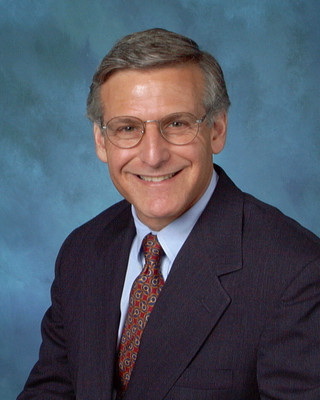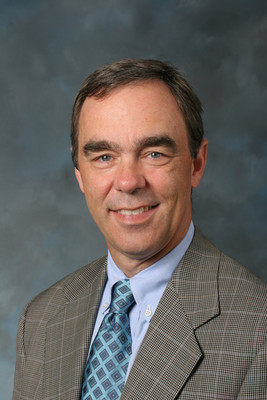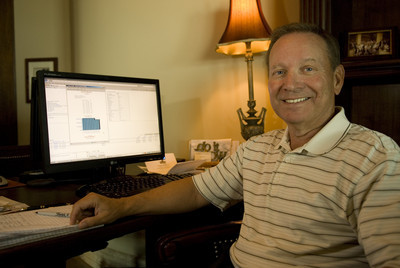Where to next? Follow the data
There you sit, waiting for some economists with their fancy-boy Ph.D.s to tell you when you can leave the foxhole you've burrowed into while you ride out the recession.
It doesn't have to be that way. We're here to help you cobble together your very own index of economic measures. We asked economists, policy analysts, employment specialists and researchers for their favorite gauges of economic health. Just follow the numbers the experts use, and you'll get a solid grip on when we can expect a recovery.
Casual observers say you can't beat jobs data as an economic barometer. When employers pick up on hiring and lay off on the layoffs, it signals the economy could be turning a corner.
But serious economists say employment stats have one fatal flaw: They lag recoveries. Businesses tend to keep a lid on staffing additions until they feel the hardest times are long behind them, so waiting until unemployment ticks down dramatically could mean you sleep through the actual revival, said Joel Naroff, president of Naroff Economic Advisors in Holland, Pa. Plus, when big companies pare work forces, they don't shed workers all at once. Layoffs can take months to complete, so staffing cuts aren't the best snapshot of current economic conditions, either.
Finally, job numbers can undergo significant revisions months after they're published, so today's numbers might not stick down the road, said Keith Schwer, director of the Center for Business and Economic Research at the University of Nevada, Las Vegas.
Those drawbacks are why Jeremy Aguero, a principal of local business advisory firm Applied Analysis, evaluates the job climate via more immediate avenues, including fresh media reports and real-time surveys asking executives about staffing plans.
"The point at which businesses stop laying off and start hiring again would be of utmost consideration" in deciding whether the economy might bounce back soon, Aguero said.
After employment figures, analysts consider a host of tourism-related data when they evaluate the economy's health.
Schwer likes visitor volume, which measures the number of tourists coming to Las Vegas, and gaming revenue, or the amount of dollars that Nevada casinos win in a month. When visitor volume and gaming revenue edge up, it indicates consumers are dropping more discretionary income on traveling and entertainment. So far in 2008, both indicators have tanked. Visitor volume was off 10.1 percent in September compared with the same month in 2007, and gaming revenue declined 5.4 percent in September year-over-year.
But Aguero's not wild about gaming revenue as an economic marker. That's because a few lucky -- or unlucky -- baccarat players can skew an entire month's casino sales. That happened in September, when some down-on-their-luck players gave the revenue picture a rosier hue than it would otherwise have enjoyed. Baccarat win that month grew 68.4 percent over a year earlier; without the gain, the state's gaming win would have fallen 8.8 percent. Those kinds of wild swings can make straight revenue data a tricky fiscal arbiter.
So Aguero looks instead at coin-in, which counts how many pennies, nickels and quarters gamblers actually dump into slot machines. Winners can't fake out coin-in, and year-over-year in September, that number fell 14.2 percent statewide and 17 percent on the Strip.
"People are just not spending as much as they did before in our hotels and casinos, both locals and visitors," Aguero said.
Outside tourism, Aguero cited three other indicators that could herald a conclusion to the economic downturn. The average price per acre of land, housing-price trends and the pace of existing home sales will all provide clues on the economy's near-term prospects.
Finding a floor under falling land prices, which have dropped 36 percent in the last year outside the resort sector, would suggest that office and industrial construction could revivify. As long as local office vacancies hover around 20 percent and no one announces new casinos, land values will continue falling, so when land prices stop their slide, expect construction gains shortly afterward.
And when housing prices stop dropping and sales of existing homes pick up, it'll show that consumers are hopping off the sidelines and starting to buy again.
Larry Murphy, a local housing analyst and president of real estate research firm SalesTraq, said he's eyeing similar indicators in the real estate market. Murphy said he'll know the worst has passed when housing prices stabilize, resales rise and resale inventory levels off.
Two of those three have happened: Inventory of existing homes for sale has steadied, spending much of the last year between 20,000 and 22,000 units. And home sales have spiked to more than 3,000 units a month, double the 1,500 or so units sold monthly in fall 2007.
Home prices keep falling, though, mostly because 2,000 of those 3,000 monthly sales have been homes in foreclosure, Murphy said. The median price on those bank-owned properties falls $10,000 to $15,000 a month. The median price of bank-owned homes sold locally in September was $175,500, while the median cost of a nonbank-owned home was $206,000. Thus did foreclosures pull the overall resale market down to a median of $186,500.
Observers shouldn't let the high number of default sales in Las Vegas deter them from using resales as an indicator of economic revival, Aguero said.
"You have to take the numbers with a grain of salt because of the number of foreclosures, and the fact that a lot of those homes are being sold for less than replacement cost," he said. "But you have to be encouraged by consecutive months in which home sales have increased."
SEARCHING SALES DATA
On top of housing and tourism indicators, observers watch taxable sales for signs of economic life. Taxable sales, which in Nevada indicate purchasing activity of tangible goods sold at the retail level, ebbed 3.6 percent year-over-year in August if you exclude the results of a tax amnesty program that brought in sales taxes from prior months. Taxable sales have slumped in every month but two since April 2007.
But sales in one corner of the economy in particular pique Naroff's interest.
Naroff likes car sales as an economic indicator. Declines in auto sales almost always precede recessions, and in Clark County, auto sales plummeted 18.6 percent in August when compared with August 2007. Car sales countywide have dipped 14.1 percent since the state's fiscal year began July 1.
Weak car purchases forebode sustained economic trouble in two ways.
First, when vehicle sales slump, employees of auto makers and their suppliers receive pink slips. That job loss ripples through discretionary spending in the broader economy.
Second, car sales measure consumer confidence.
"We have seen such a collapse in motor-vehicle sales that a lot of it has to do with emotion," Naroff said. "We're dealing with a psychological situation as much as an economic situation. As soon as we see car sales come back to even mediocre levels, that will tell us people are comfortable enough to take on a major purchase. What I'm looking for is a change in attitude. Confidence numbers are one thing. Consumers actually putting their money where their mouths are is something else."
Outplacement expert John Challenger said he'll know the economy is on the mend when he sees improvements in job growth, an upward swing in consumer confidence and an expansion of the country's gross domestic product. But Challenger, chief executive officer of Chicago-based Challenger, Gray & Christmas, also monitors a key monetary measure: the TED spread.
The TED spread is the difference between the interest rate on three-month Treasury bills that the U.S. government uses to finance short-term debt and the three-month Eurodollars futures contract gauged by the London Interbank Offered Rate. It sounds complicated, but its implications are simple: A wide TED spread means banks are charging higher interest rates to compensate for rising default risks on interbank loans. A narrower spread means banks sense less potential for defaults, and that shift in attitude could help thaw frozen credit markets, Challenger said.
The TED spread (TED is an acronym of Treasurys and Eurodollars) averages 0.3 percent over the long term. It hit a record of 4.65 percent in October, as lending markets ground to a halt. By Nov. 14, it had retreated to 2.1 percent, down considerably from its high but still up compared with 1.6 percent a year earlier.
Analysts and industry experts said they see mixed signs of recovery in all those indicators.
Both Naroff and Aguero said the economy showed signs of life through the summer, until September's financial crisis. When Lehman Bros. Holdings failed, Merrill Lynch & Co. Inc. needed a buyout to survive and big insurer American International Group Inc. required an $85 billion federal bailout, banks quit lending altogether.
"We were pretty much there (in terms of starting a recovery)," Naroff said. "Maybe not in Las Vegas, but in other parts of the country, we had really been seeing the beginning of stabilization in housing prices in August and September until the credit crisis hit, and then the financial panic came. People couldn't get loans and people got scared. We were beginning to get better and someone kicked us in the head."
Earlier this year, Aguero's company pegged an end to the downturn in November, with six months to nine months more spent hovering near the economy's bottom. Up until five weeks ago, those projections looked "dead on the money," Aguero said.
But the financial contagion stopped growth altogether and imperiled the local tourism industry. That credit stumble cost the economy at least six months to nine months of additional downturn, and Aguero's still projecting a six- to nine-month stint at the economy's nadir before growth begins anew. That means we're "easily" 15 months to 18 months away from broad economic improvement, Aguero said.
To peg an estimated date for a housing turnaround, Murphy suggested considering the number of bank-owned homes in Las Vegas.
Banks own nearly 15,000 local homes, and they're selling them at a clip of about 2,000 units a month. If banks don't take on more homes, they'll still carry a seven-month inventory of foreclosures they must unload. But you can count on banks' assuming more homes, Murphy said. Lenders will probably accrue big numbers of foreclosures through 2009, he estimated.
"The rational person has to say we may have to chew through another 12 to 14 months of (foreclosure) inventory," Murphy said.
And because a good number of buyers in today's local market are investors who'll likely sell out to cash in over the next three to 10 years, expect a "constant flow of supply that will affect housing-price appreciation over the next decade in Las Vegas," Naroff added.
Challenger predicted a "difficult" 2009, though he said he hopes the economy shows signs of renewal by late next year. He sees potential help from some positives: the dramatic drop in the price of oil, from a record near $150 a barrel to today's $55 or so, as well as the government's willingness to spend billions to keep banks liquid.
Naroff said he believes improvements in consumer confidence could emerge as early as the second quarter. Sure, unemployment is pushing 7 percent nationally, but that means 93 percent of Americans still have jobs, he said. Even though the vast majority of people still have regular income, just 30 percent of consumers want to spend money.
"There's a huge gap between those saying, 'We're going to make it through this,' and those who are actually spending," Naroff said. "Once that realization kicks in, you have a turn. And sometimes that turn comes sooner and sharper than we expect. If confidence kicks in, we'll see a rebound."
Contact reporter Jennifer Robison at jrobison@reviewjournal.com or 702-380-4512.
ECONOMY-GAUGE GLOSSARY
• Unemployment: The number of people out of work and actively seeking a new job
• Visitor volume: The number of tourists coming to Las Vegas
• Gaming revenue: The amount of money Nevada casinos win from gamblers
• Coin-in: The number of pennies, nickels and quarters gamblers drop into the state's slot machines
• Average price of land per acre: The dollars per acre local properties have sold for
• Housing price: The median cost of resales and new homes sold in the market
• Sales of existing homes: The number of resale properties purchased in the market
• Resale-home inventory: The number of existing homes sitting unsold on the market
• Taxable sales: The dollar amount of tangible products purchased in Nevada's stores
• Car sales: The number of vehicles sold
• TED spread: The difference between the interest rate on three-month Treasury bills and eurodollars futures contracts measured by the London Interbank Offered Rate.





















